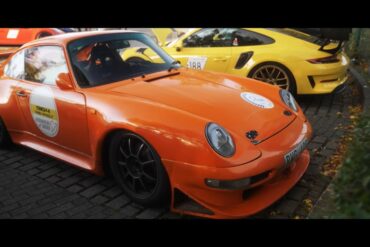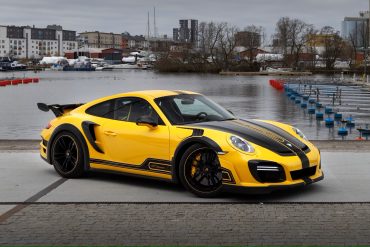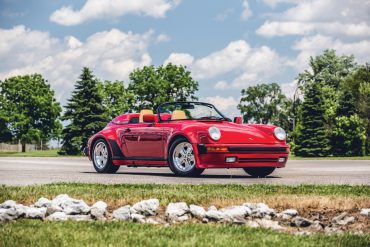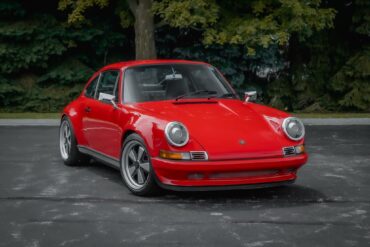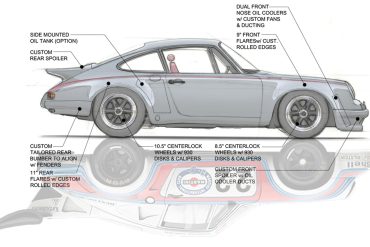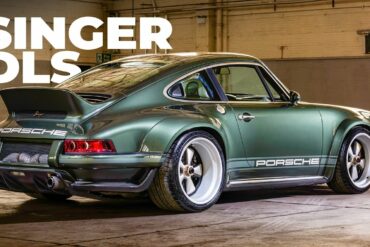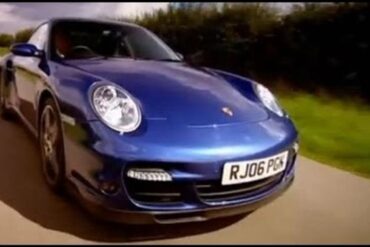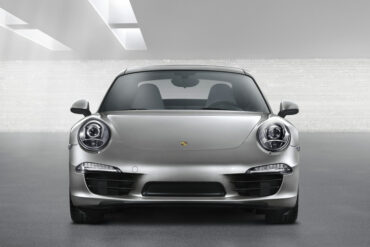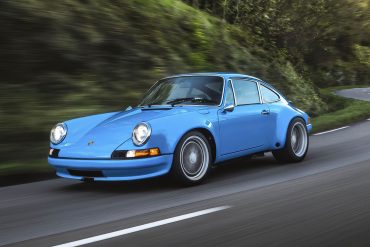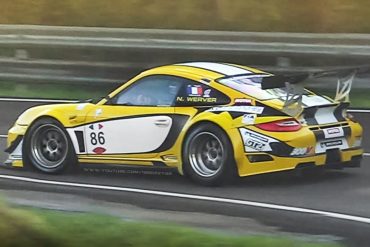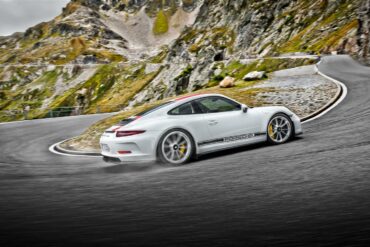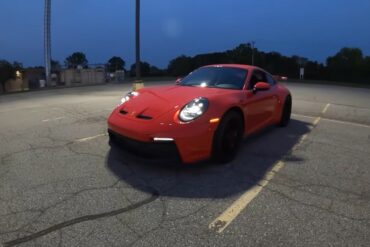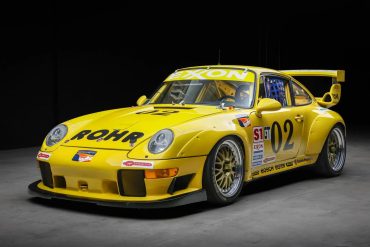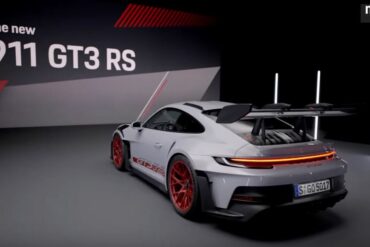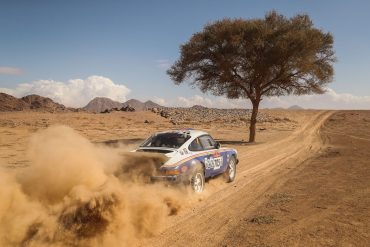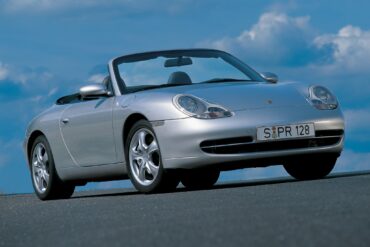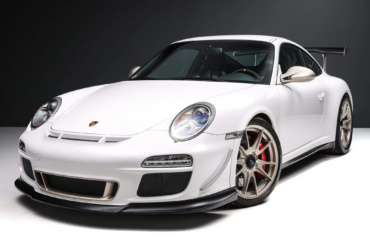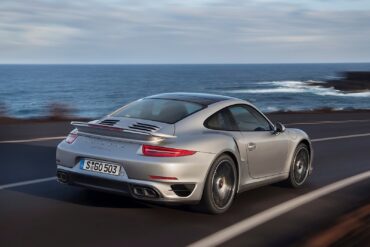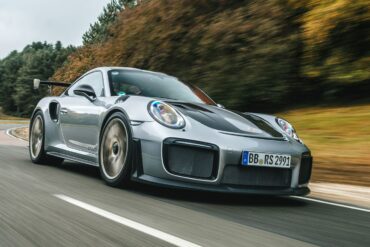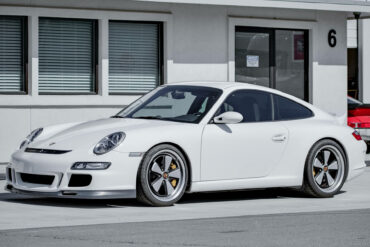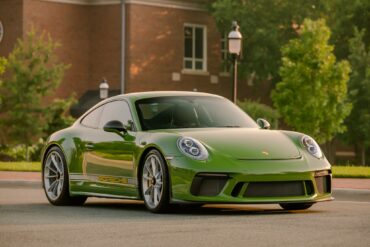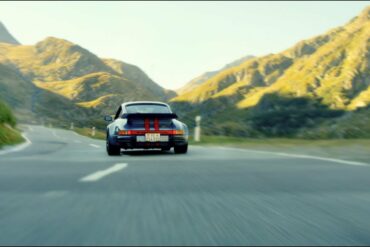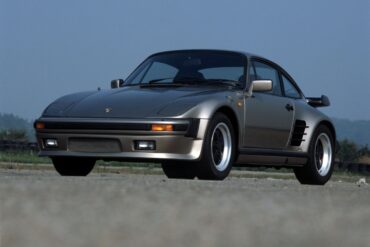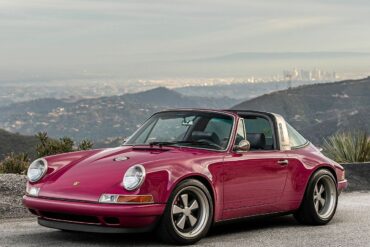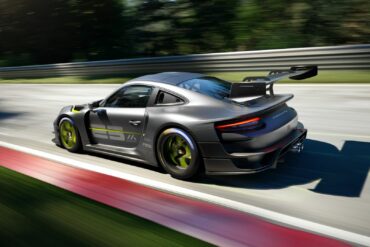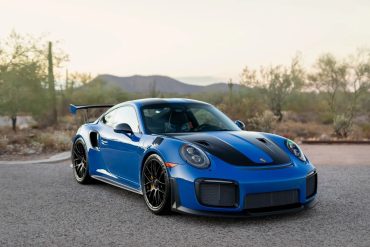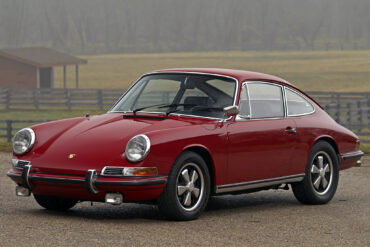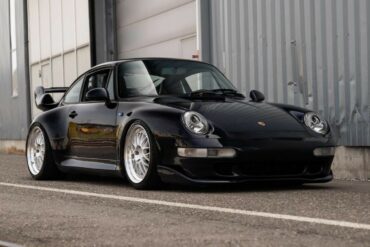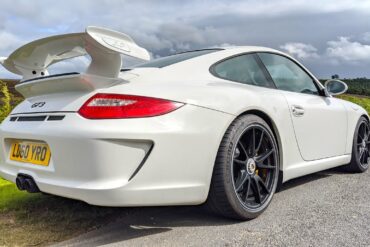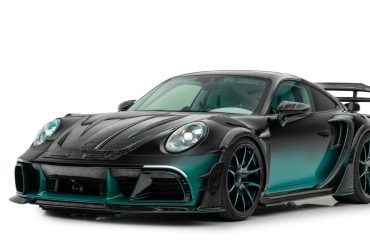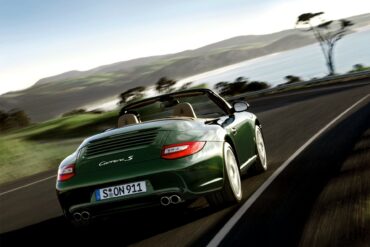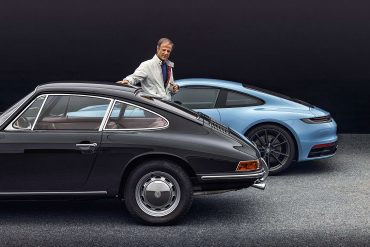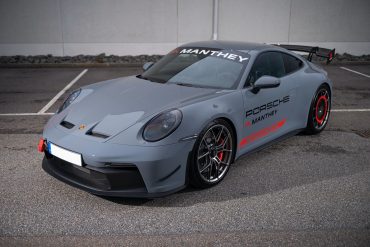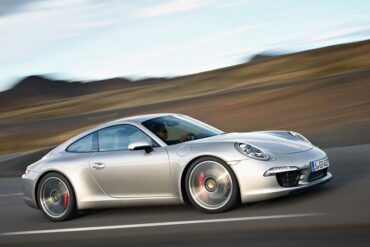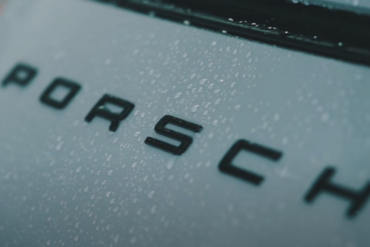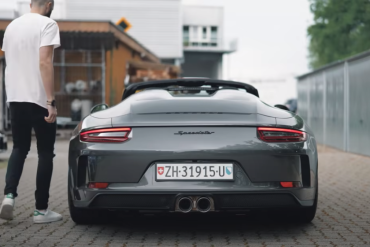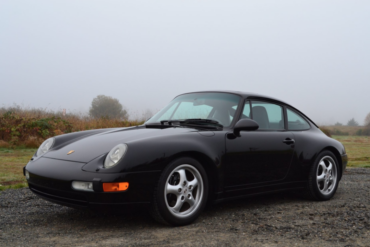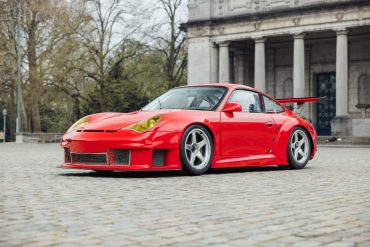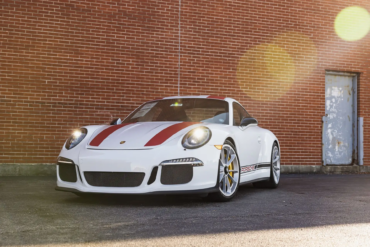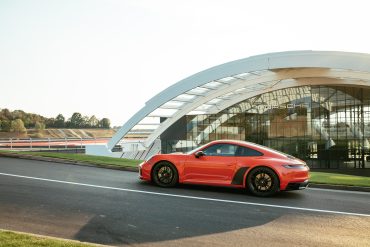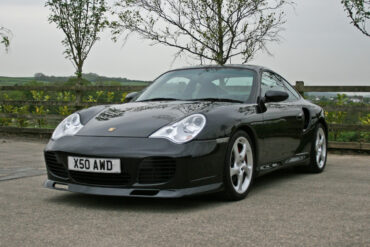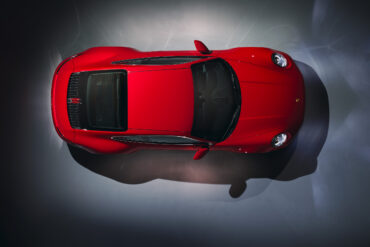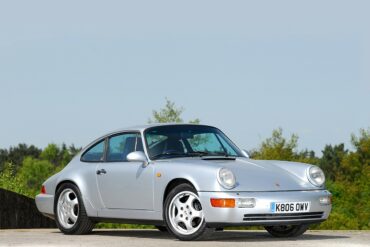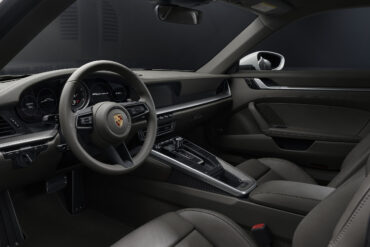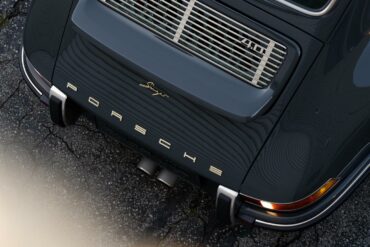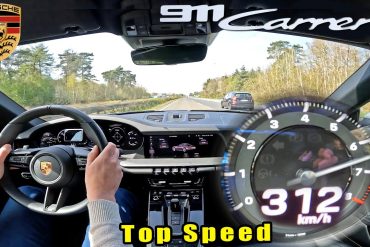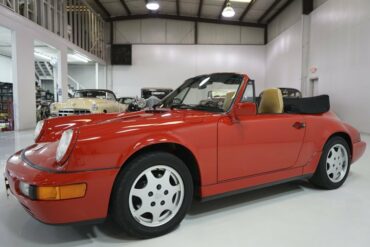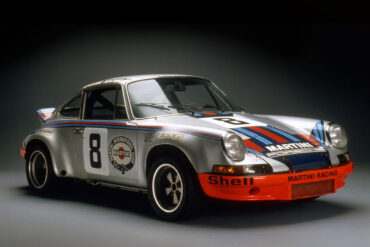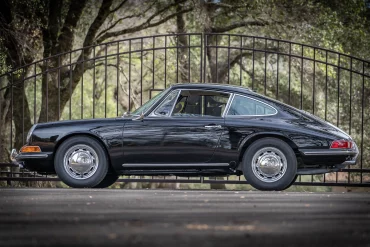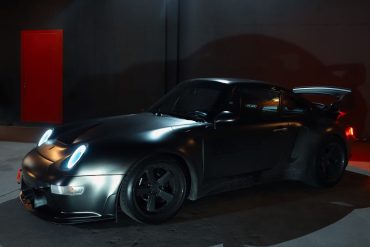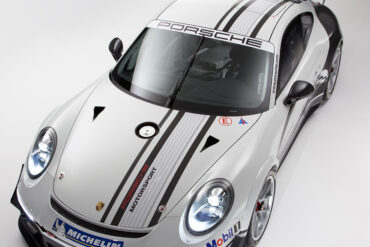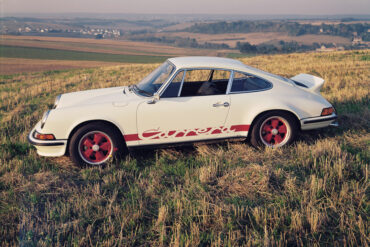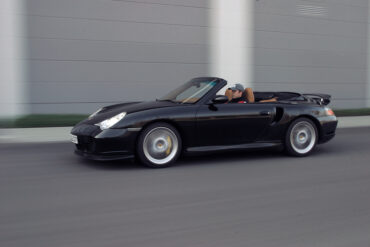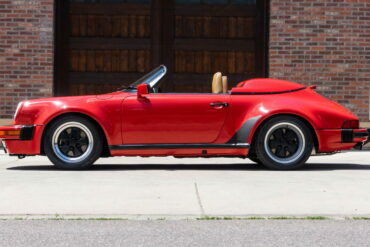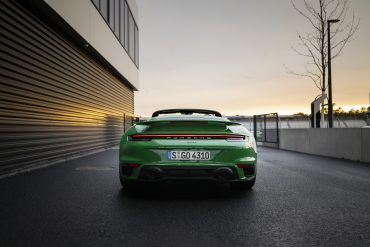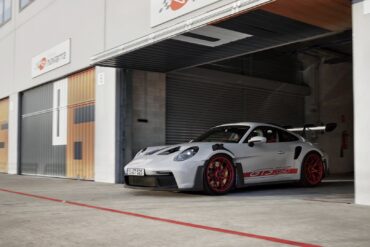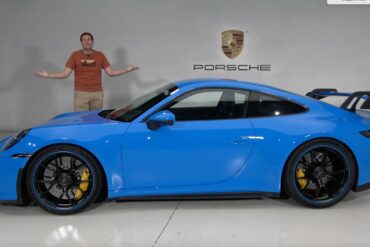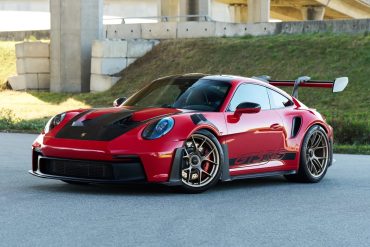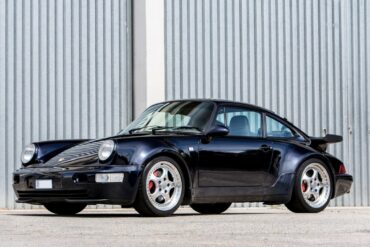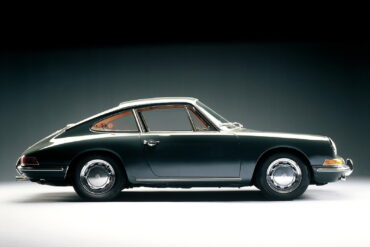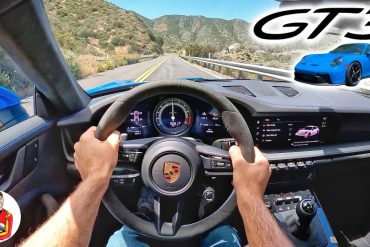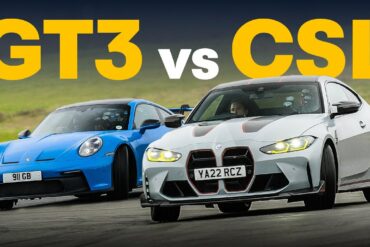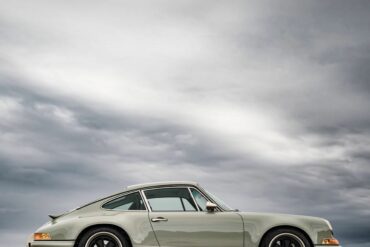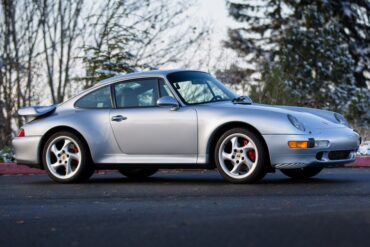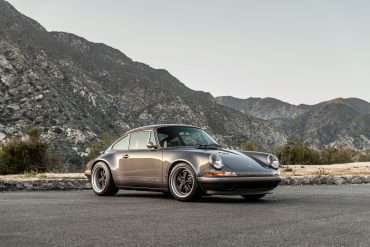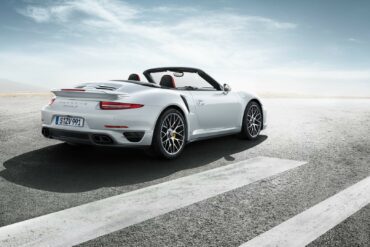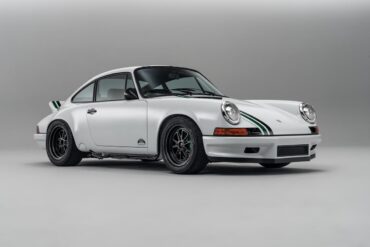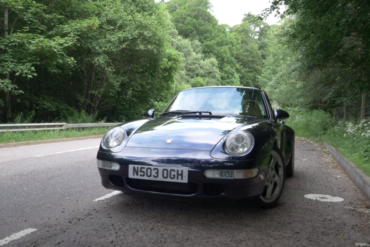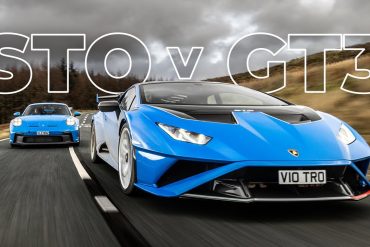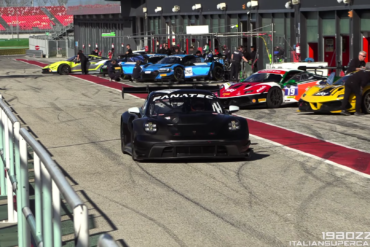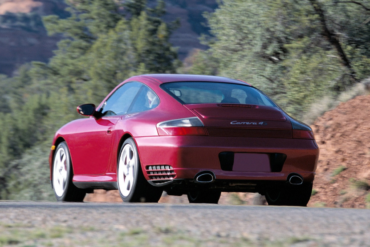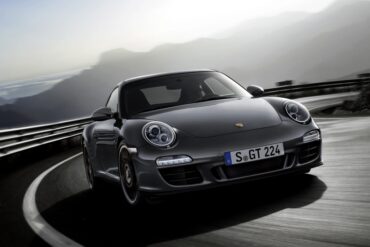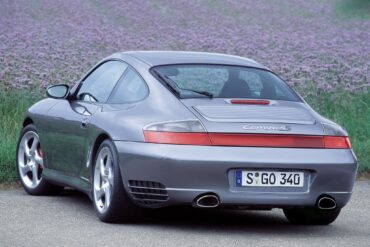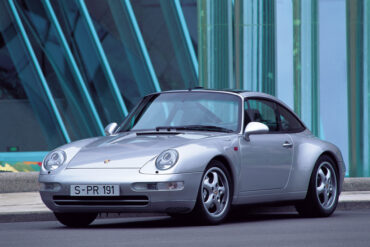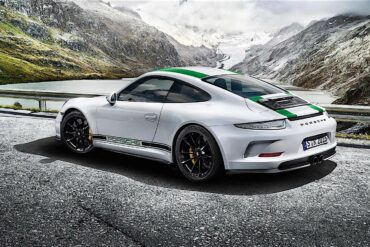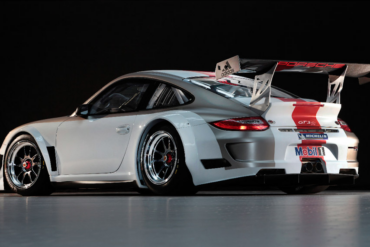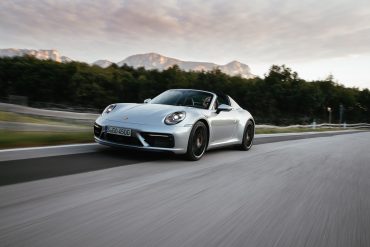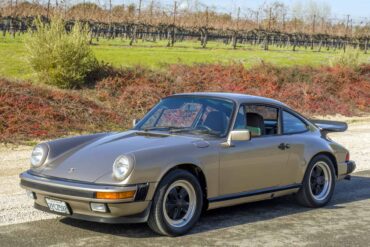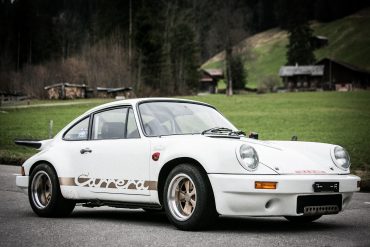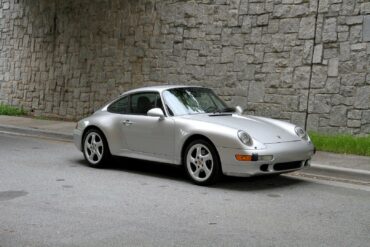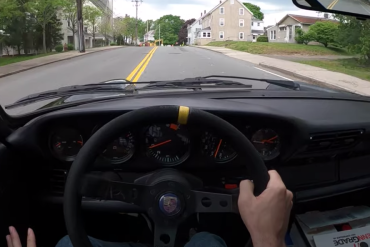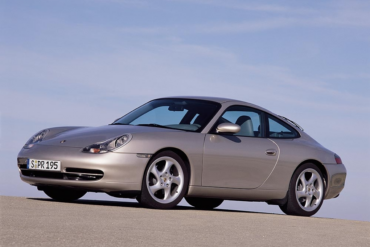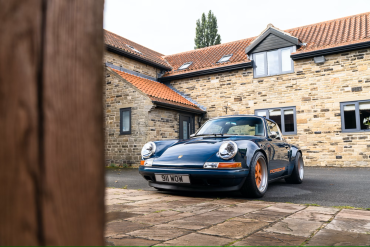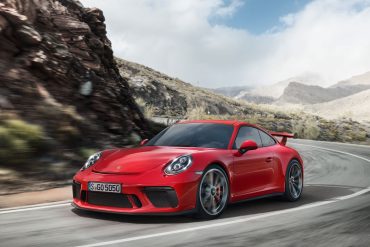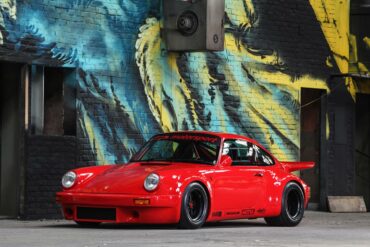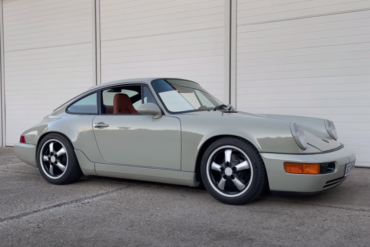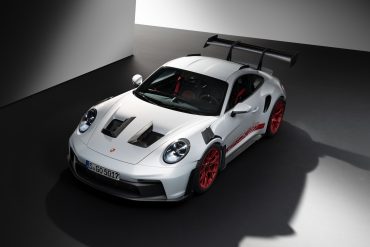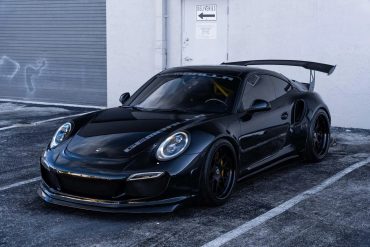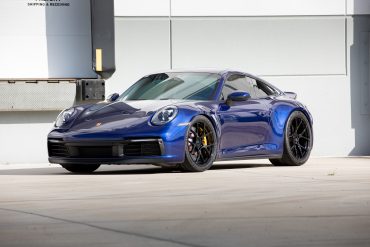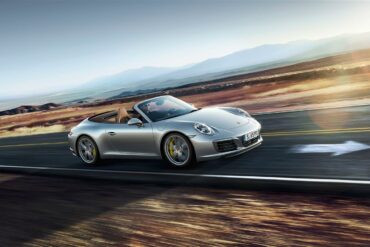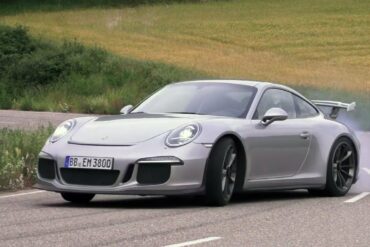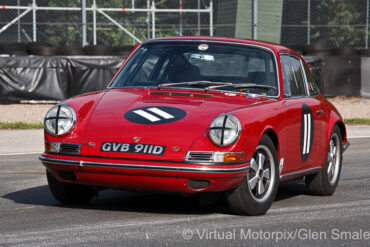Misha introduces Jonas’ heavily modified Porsche 964 and takes it for a spin around the track of the Nurburgring....
Porsche 911
All
- Porsche 912
- 911 Carrera RS 2.7
- Porsche 901 (911)
- Porsche 911 (F-Series)
- Porsche 911 (991)
- Porsche 911 (G-Series)
- Porsche 911 (964)
- Porsche 911 (993)
- Porsche 911 (996)
- Porsche 911 (997)
- 911 Speedster Concept
- Porsche 911 (992)
- 964 Carrera 2
- 964 Carrera 4
- ’30 Jahre’ Anniversary
- 964 Speedster
- 964 Turbo
- 964 Carrera RS
- 964 Carrera Cup
- 964 RSR
- 993 Carrera
- 993 Carrera 4
- 911 Edition 50
- 993 Carrera 4S
- 911 2.0 Bertone Roadster
- 993 Carrera S
- 993 Targa
- 992 Sport Classic
- 993 Turbo
- 996 Carrera
- 993 Carrera RS
- 992 America Edition 911
- 996 Carrera 4
- 993 GT2
- 996 Targa
- 993 Carrera Cup
- 996 Carrera 4S
- 996 Turbo
- 996 Turbo S
- 996 GT3
- 996 GT3 RS
- 996 GT2
- 996 GT3 Cup
- 996 GT3 R
- 996 GT3 RSR
- 997 Carrera
- 996 GT3 RS Race
- 997 Carrera S
- 997 Carrera 4
- 997 Carrera 4S
- 997 Targa
- 911 Carrera 3.0 Coupe (G-Series)
- 997 Targa 4S
- 997 Turbo
- 997 Turbo S
- 997 GT2
- 992 Carrera T
- 997 GT2 RS
- 997 Speedster
- 997 Carrera GTS
- 992 Dakar
- 997 Carrera 4 GTS
- 997 GT3 Cup
- 997 GT3 R
- 997 GT3 RSR
- 997 GT3
- 997 GT3 RS
- 997 GT3 R Hybrid
- 991 Carrera
- 991 Carrera 4
- 991 Carrera S
- 991 Carrera 4S
- 991 Targa 4
- 991 Targa 4S
- 991 Turbo
- 991 Turbo S
- 991 Carrera GTS
- 991 Carrera 4 GTS
- 991 Targa 4 GTS
- 991 911 R
- Porsche 992 GT2 RS
- 991 GT3
- 991 GT3 RS
- 991 GT2 RS
- 991 Speedster
- 991 GT3 R
- 991 GT3 Cup
- 991 RSR
- 991 Carrera T
- 992 Carrera 2
- 992 Carrera 4
- 992 Carrera S
- 992 Carrera 4S
- 992 Targa 4
- 992 RSR
- 992 Targa 4S
- 992 Carrera GTS
- 992 Carrera 4 GTS
- 992 Targa 4 GTS
- 992 Turbo
- 992 GT3 R
- 992 Turbo S
- 992 GT3
- 992 GT3 Touring
- 992 911 S/T
- 911 (G-Series)
- 992 GT3 RS
- 992 GT2 RS
- 992 GT3 Cup
- 911 Carrera 3.0 (G-Series)
- 911 S (G-Series)
- 911 Carrera RSR 2.8
- 911 SC (G-Series)
- Porsche 992 GT3 R Rennsport
- 911 S/T
- 911 Carrera 3.2 (G-Series)
- 911 (Base Model)
- 911 Turbo (930)
- 911 SC Safari
- 911 L
- 911 Carrera RSR Turbo 2.1
- 911 T
- 911 Carrera RSR 3.0
- 911 E
- 911 S
- 911 SC San Remo
- 911 Carrera 3.2 Clubsport
- 911 R
- Porsche 953
- 911 Carrera RS 3.0
- 911 T/R
- 911 Carrera 25th Anniversary
- 911 SC RS
- 911 Turbo LE
- 911 Carrera Commemorative
- 911 Carrera 2.7 (G-Series)
- 911 3.2 Speedster
- 911 Turbo 2.7
- 964 Turbo S
TechArt has fully upgraded this 991.2-generation Porsche 911 Turbo S to GTStreet R specification. The rear engine lid houses a...
In this thrilling hot lap brought to us by sport auto, witness the sheer power and precision of the Porsche...
In 1989, Porsche marked the 25th anniversary of 911 production by introducing noteworthy offerings. Alongside a commemorative edition of their...
The 1990 Porsche 911 Carrera 4 underwent a comprehensive restoration and backdate by Abreu Motors. It features a Guards Red...
Today, Classic 9 Motorwerks proudly announced the construction on its new headquarters has begun. This huge undertaking of their new...
Tearing It Up In The $1.8 Million Ultimate 911 Henry Catchpole gets his first close-up look at Singer’s $1.8m DLS...
Jeremy Clarkson – Ferrari F430 vs Porsche 911 Turbo It may be hard to believe, but Jeremy finally changes his...
2012 – 2015 Porsche 911 Carrera Pictures & Gallery...
In a world of horsepower ratings, Nürburgring lap times, and numerous statistics that often don’t tell the complete story, it’s...
I was having a hard time getting going this morning. This video did a great job of waking me up....
Porsche 911 R – Official Video Porsche makes the best cars on the planet, but lately their 911 models have...
Get your earphones ready to fully enjoy this video’s binaural audio of the 2022 Porsche 911 GT3 night drive....
Developed by Porsche to fulfill FIA GT racing homologation requirements, the 993 GT2 was derived from the 993 Turbo. It...
The newest 911 GT3 RS is the complete package: gorgeous design, lightweight body, the most advanced aerodynamics, with impeccable performance...
“What in the world is an American woman doing here with this car?” Jacky Ickx was incredulous. The legendary Formula...
The 996 Cabriolet was introduced in March 1998 at the Geneva Motor Show. The 996 Cabriolet was long ready (remember, it was tested already in 1995), but for marketing and production-related reasons it was launched in 1998 as a 1999 model. While the evolution with the 911 coupe was questionable from 993 to 996, the real evolution came with the cabriolet. In USA - the biggest market - 911 Cabriolets outsold the Coupés. The all-wheel-drive system provides between 5-40% of torque to the front wheels depending on the situation.
This particular 2011 Porsche 911 GT3 RS is one of only 541 built for the US market during a two-year...
Porsche 911 Turbo 996 Review We review the 2002 Porsche 911 Turbo 996 and discuss the good and bad of...
2014 Porsche 911 Turbo S (991) Technical Specifications Engine layout Rear Engine Engine type Twin Turbo Boxer w/ VTG Cylinders 6...
991.2 GT2 RS Reviewed CAR magazine UK reviews the new 2018 Porsche 911 GT2 RS – the 690bhp, rear-wheel drive...
Presented at the 2006 Geneva Motor Show, the 2007 911 GT3 is like those before it. A more track biased...
DriveTribe Reviews the 997 GT3 RS Richard Hammond has always been a Porsche guy, but there is one generation of...
The 991.2-generation 911 GT3, when equipped with the Touring Package, exhibits a more subdued character compared to its track-focused counterpart....
Porsche 930 Turbo on the Great St. Bernard Mountain Pass The 930 Turbo on the Great St. Bernard Mountain Pass...
1981-1989 Porsche 911 Turbo 3.3 SE ‘Flachbau’ Pictures & Gallery ...
The McLaren 765LT and Porsche 911 Turbo S have both displayed exceptional drag racing capabilities, as evidenced by numerous videos...
Singer Vehicle Design – Max Power Commission Today, we take a closer look at the Singer Vehicle Designs Max Power...
2021 Porsche 911 GT2 RS Clubsport 25 (991.2) Technical Specifications What drives us? The next victory. Even after 25 years,...
The Porsche 911 GT2 RS made its debut with the 997 generation in 2010 and received widespread acclaim. In 2018,...
The 911 S was introduced to increase the performance potential of the very successful 911. It had a more powerful...
This Swiss based 993 Turbo looks like it has some really nice touches. The perfect stance....
Porsche 997 GT3 Review Thanks to my good buddy Tom, I got behind the wheel of his incredible Porsche 911...
For almost 50 years, the Porsche 911 Turbo as a classic Coupé (and for more than 20 years in the...
Episode Two: The Porsche 901/912 Summary Welcome to The Audiobahn, the Stuttcars.com podcast focused on all things Porsche. In our first...
Motorweek’s Original Porsche 911 Turbo (993) Review The 993 Turbo is widely referred to as the “True Purist’s Holy Grail.”...
2009 Porsche 911 Carrera S Cabriolet (997.2) Technical Specifications Engine Type Flat 6 Induction Normally-aspirated Cooling Water-cooled Valvetrain Double overhead camshafts...
Evolution, not Revolution Since its debut in 1964, the Porsche 911 has epitomized engineering evolution. Conceived by Ferdinand “Butzi” Porsche,...
This 2023 Porsche 911 GT3 has been enhanced with the coveted Manthey Performance Kit, courtesy of Porsche Centre Gothenburg. It...
Porsche Option Codes – Porsche 911 (2012 Model Year) Looking to decode your 2012 Porsche 911 option codes? Want to...
What car and what a sound!...
Porsche 911 (993) Technical Specifications & Model Comparison (European Variants) European specs 911 993...
Based on the road-going 996 911 GT3 RS, the GT3 RSR features improvements to its predecessor in all key areas. The...
Despite its limited numbers, the 2016 Porsche 911 R instantly become a hit among the most avid Porsche collectors and...
2021 – Present Porsche 911 Carrera 4 GTS (992) Pictures & Gallery...
2005 Porsche 911 Turbo X50 (996) Technical Specifications Price $ $133,000 Engine Aluminum Alloy, Twin Turbo Flat-6 Position Rear Longitudinal...
2021 Porsche 911 Carrera (992) Technical Specifications Model 911 Carrera Engine Engine layout Rear Engine Engine type Boxer, twin-turbo Cylinders...
1993 Porsche 911 Carrera 4 Coupe (964) Technical Specifications Engine Type Flat 6 Induction Normally-aspirated Cooling Air/oil-cooled Valvetrain Single overhead...
2022 Porsche 911 Carrera 4 Cabriolet (992) Technical Specifications Engine layout Rear Engine Engine type Boxer, twin-turbo Cylinders 6 Valves per...
Singer Vehicle Design – Stockholm Commission Today, we take a closer look at the Singer Vehicle Designs Stockholm Commission. It...
AutoTopNL, an automotive YouTube channel, recently released a video featuring a Porsche 992 Carrera being pushed to its limits on...
1991 Porsche 911 Carrera 4 Cabriolet (964) Technical Specifications Engine Type Flat 6 Induction Normally-aspirated Cooling Air/oil-cooled Valvetrain Single overhead...
Most Porsche fans know little about this epic wide-bodied 911 based race car. While the iconic 2.7 RS is every fan boys...
There are currently two notable Porsche 911s being offered on Bring a Trailer: a 1965 Porsche 911 and a 2006...
Since their groundbreaking debut in 2017 with the 400R, Gunther Werks have been pushing boundaries and redefining automotive excellence. Now,...
991 Carrera GT3 Cup Champions & Results 991 Carrera Supercup 2013 Nicki Thiim Sean Edwards Michael Ammermüller 2014 Earl...
Revealed at the 1972 Paris Auto Show, the Carrera 2.7 RS was a special model used to homologate the 911 in Group 4 racing. Developed from the 911S, the 2.7 was more potent in almost every area. Compared to the standard Carrera, the 2.7 RS featured a larger engine, wider flares to accommodate the Fuchs alloy wheels, stiffened suspension, larger brakes and a ducktail rear spoiler. The Touring outsold the Lightweight, with a total of 1380 units built (the Lightweight had only 200 units).
2005 Porsche 911 Turbo S Cabriolet (996) Technical Specifications Engine Type Flat 6 Induction Twin-turbocharged Cooling Water-cooled Valvetrain Double overhead...
Essentially a Carrera 3.2 with a chopped, more steeply raked windscreen and hood, plus a stripped-out interior. Most had wide Turbo bodies. Porsche insisted that the simple hood was not designed to be 100 per cent watertight. The first Porsche 911 Speedster was built in 1989 and it was the last vehicle with the old 911 body. Three decades passed before the Speedster made a comeback. Had a 3.2 L Aircooled Flat 6 and 2274 were produced for the 1989 model year.
2021 Porsche 911 Turbo Cabriolet (992) Technical Specifications Model 911 Turbo Cabriolet Engine layout Rear Engine Design and cylinders Twin-turbocharged...
Arguably the most extreme 911 to be build as a production car for the road and track. The most significant improvements made to the RS—over both the 992 GT3 and the previous-gen 991 GT3 RS—were applied to the aerodynamics and chassis departments of the car. The new 911 GT3 RS is even more optimized for track use than its predecessors. The spontaneously responsive, high-revving four-litre, six-cylinder boxer engine has proven ideal for use at track days and club sport events.
Doug DeMuro Reviews the new GT3 Porsche 911 992 GT3 Review!!! Today I’m reviewing the new 992 GT3, and I’ll...
The GT3 RS, positioned at the pinnacle of the Porsche 911 lineup, is a street-legal race car boasting an impressive...
1994 Porsche 911 Turbo 3.6 Coupe (964) Technical Specifications Engine Type Flat 6 Induction Turbocharged Cooling Air/oil-cooled Valvetrain Single overhead...
Porsche 911 (1963 – 1973) Story & History F-Body – The 1st Generation Porsche 911 Premiere: 1963 September 12 at...
The 2022 Porsche 911 GT3 is Bonded to Driver DNA (POV Drive Review) Join Miles in the 2022 Porsche 911...
Germany is renowned for producing high-performance vehicles, with strong contenders from Mercedes-AMG, BMW, Porsche, and Audi in the sports car...
Singer Vehicle Design – Sun Valley Commission Today, we take a closer look at the Singer Vehicle Designs Sun Valley...
The 993 Turbo was available between late 1995 to 1998. Powered by a twin-turbocharged 3.6 liter flat six, it was rated at 402-horsepower. It’s distinguished easily from the rear, as the whale-tail spoiler is quite deep to house the intercoolers meant to cool the intake charge. This extra power might have been a handful for street drivers, so all-wheel drive from the 993 Carrera 4 added traction at all four corners. Approximately 6,000 coupes were made. Although powered by a different engine, a limited production 993 Turbo Cabriolet was available in the early days of the 993 generation. A more powerful 993 Turbo S was also introduced in 1997.
Singer Vehicle Design has emerged as arguably the foremost name in the realm of customizing Porsche 911s to date. Their...
2014 Porsche 911 Turbo S Cabriolet (991) Technical Specifications Engine layout Rear Engine Engine type Twin Turbo Boxer w/ VTG Cylinders...
Old vs New – Choosing A Hero The 2022 Porsche 911 GT3 Touring and the Dodge Viper GTS are two...
Le Mans Classic Clubsport Restomod Paul Stephens is considered THE Porsche guy in the UK. Restoration and restomodding is his...
DRIVEN: Midnight Blue Porsche 993 911 Turbo In this video, courtesy of the Porsche Club of Great Britain (Region 2)...
With its signature rear-engine layout and unmistakable six-cylinder exhaust note, the Porsche 911 GT3 R (992) is the latest addition...
2004 Porsche 911 Carrera 4S Coupe (996) Technical Specifications Engine Type Flat 6 Induction Normally-aspirated Cooling Water-cooled Valvetrain Double overhead...
The new Porsche 911 Carrera 4 GTS combines a 408 hp 3.8-litre flat six engine with intelligent all-wheel drive that delivers a further exhilarating dimension to the dynamics of the iconic rear-engined sports car. The 911 was first offered with four-wheel drive in 1989 and the drivetrain has been a popular option ever since. Now, the 911 Carrera 4 GTS broadens customer choice in 2011, building on the success of the two-wheel drive Carrera GTS that went on sale in December last year. The 911 Carrera 4 GTS power unit has its origins in the 3.8-litre, six-cylinder from the Carrera S, with the power kit added.
2005 Porsche 911 Carrera 4S Coupe (996) Technical Specifications Engine Type Flat 6 Induction Normally-aspirated Cooling Water-cooled Valvetrain Double overhead...
The Targa was the half-convertible bodywork offered by Porsche for the 911. By removing only a part of the roof and leave the closed-coupe rigid structure. It was offered a better sensation than a sunroof and it wasn't as heavy as a convertible. Unlike the previous Targa generation, the 993 featured a glass panel over the front passengers instead of a fabric one. The rest of the bodywork looked similar to the Carrera. The engine was a completely reworked flat-six, with a 3.6-liter displacement with the VarioCam system, which offered 285 hp. It was mated either with a 6-speed manual or a 4-speed automatic.
2016 Porsche 911 R (991) Technical Specifications Engine layout Rear Engine Engine type Boxer Cylinders 6 Valves per cylinder 4 Construction...
2012 Porsche 911 GT3 R (997) Technical Specifications Type Racing Car Built at Weissach, Germany Engine Flat-6 Position Rear, Longitudinal Aspiration...
The 2022 Porsche Targa 4 GTS adds more grunt, packs less weight, has sharper handling, and packages it up in the sexiest bodystyle that Porsche sells. The Targa 4 GTS gives us the best of all worlds, providing all-wheel-drive traction, an open-top experience, and a fixed-roof feeling in the same car. Its automatic transmission and adaptive suspension completed the image of a daily-driver sports car. This may be the perfect car.
Porsche 911 Spare Parts Catalogs (G-Series, 1974 – 1989 Model Year) These official Porsche PET Diagrams and codes for the G...
1974 Porsche 911 Carrera RS 3.0 Pictures & Gallery...
1997 Porsche 911 Carrera (993) Technical Specifications Engine Type Flat 6 Induction Naturally Aspirated Cooling Air/oil-cooled Valvetrain Single overhead camshaft...
A great video of a 1988 911 3.2L Carrera on its way to Bond Group for some light maintenance. Sounds...
Last year JayEmm (a Porsche-focused YouTuber) made a video talking about the fact he may never want another 911. In...
The 996 series was a monumental update to the 911 story. The Type 996 introduced water-cooled engines and it also ushered in a new body design. The roof line with a windscreen which is around five degrees flatter gives the side view a more fluid look. Gone was the "classic" 911 design, the entire main body now much sleeker. The flat six in the Carrera 996 was a newly-developed flat-six engine that offered 300 hp. It was mated as standard with a six-speed manual. A 5-speed automatic (Tiptronic) with manual override to shift gears was on the options list. As always, the Carrera 2 was rear-wheel-drive.
This remarkable 911 is a bespoke sports car, crafted by Singer Vehicle Design, and is one of the few Targa...
Porsche Option Codes – Porsche 911 (2018 Model Year) Looking to decode your 2018 Porsche 911 option codes? Want to...
For over 43 years, DP Motorsport has been modifying Porsche models for both the racetrack and the road. Their latest...
Wonderful Porsche 964 An on-board drive & in-depth review of the specs and build principles applied to our Lightweight ’92...
2023 – Present Porsche 911 GT3 RS (992) Pictures & Gallery ...
The 2015 Porsche 911 Turbo S coupe, finished in Jet Black Metallic, has been equipped with a Gemballa GT Concepts...
Photos & Technical Details: Flat 6 Motorsports. Do you have an interesting Porsche build that you want to show off?...
2017 Porsche 911 Carrera S Cabriolet (991.2) Technical Specifications Engine Engine layout Rear Engine Engine type Boxer, twin-turbo Cylinders 6 Valves...
Chris Harris Spanks the New 991 GT3 If we were a car magazine we’d call this a WORLD EXCLUSIVE, but...
1966 Porsche 911 2.0-litre – GVB 911D – parked on track at Lodge Corner after practice for the Oulton Park...


